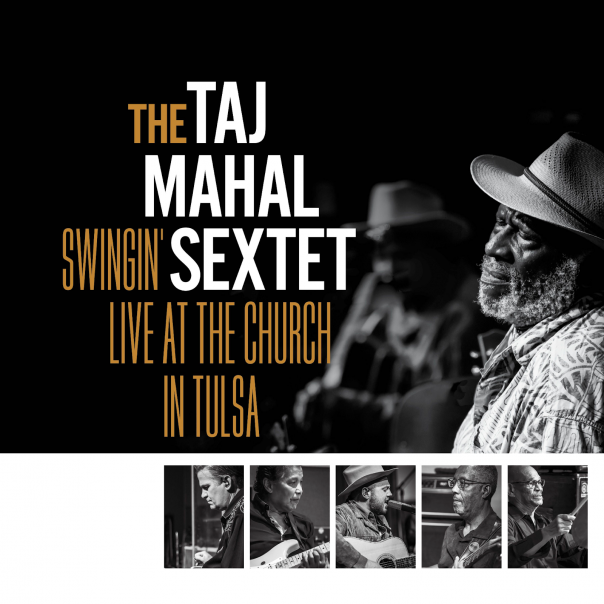ALBUM REVIEW: Taj Mahal gets monumental at ‘the Church in Tulsa’

Taj Mahal, “Swingin’ Live at the Church in Tulsa.”
Like the palace in India, musician Taj Mahal has been around for awhile. The bluesman, born Henry St. Claire Fredericks, Jr. is, in fact, a national treasure who should be as revered here as his namesake palace halfway around the world. From his early work with Ry Cooder in the Rising Sons during the ’60s, Mahal worked to expand the boundaries of blues, incorporating musical styles from all over the world including African music and calypso.
Swingin’ Live at the Church in Tulsa
Taj Mahal
Lightning Rod Records, March 8
9/10
Get the album on Amazon Music.
Swinging Live at the Church in Tulsa is a new live album recorded in an old church formerly owned by the late Leon Russell. The church served as musical home away from home for everyone from Tom Petty to Jimmy Buffett to Stevie Wonder. In other words, it’s a room full of spirits, and this is a terrific album.
Some of the set is fairly straight-ahead blues like Mahal’s “Mailbox Blues” and Charlie Willis’ “Betty and Dupree.” But the low-fi retro-vibe has been updated with Mahal’s signature guitar sound, dripping with a chorus effect (think Kurt Cobain’s tone on “Come As You Are”).
On the driving blues of “Slow Drag” Mahal sings, “Said I’m tired of living, in this low-down prison cell/ And I wouldn’t have been here darling, hadn’t been for Big-Legged Nel/ I wouldn’t have been in the hoosegow, that jailhouse, ’cause of Big-Legged Nel.”
Elsewhere on the album, genre is wonderfully impossible to pin down. The exquisite and musically enigmatic “Queen Bee,” refuses to be categorized as it sways and saunters between between country, blues and bliss. A beautiful rendition of one of Mahal’s bigger hits, “Lovin’ in my Baby’s Eyes,” is similarly syrupy. But the country swaying is more winsome on “Waiting For My Papa to Come Home.” Mahal’s father was killed in a tractor accident when the singer was just a boy.
In addition to singing, Taj Mahal plays guitar, banjo, ukulele and piano at various points on the album. Trey Hensley adds lush Hawaiian lap steel over the a graceful rendition of David Keli’i’s “Twilight In Hawaii.” Mahal’s voice has a delightful Muppet-esque growl as he trades verses with the twangier Hensley on Chester Burnett’s “Sitting On Top of the World.”
RELATED STORIES:
• Joan Baez and Taj Mahal star at Acoustic-4-a-Cure Fillmore show
• Taj Mahal streams a good time from The UC Theatre
The album is strange in a way because the music is both familiar and alien. It’s as if Taj Mahal has somehow created a new musical language, or speaks our musical vocabulary with the accent of an artist who has traveled the world — and found a home in every country.
If you’ve got an aunt who likes box wine and wears a lot of tie-dye, I guarantee you she is absolutely losing her mind to this album. And let’s face it, she’s living the life we all secretly wish we were living. Or maybe that’s just me. Regardless, there are almost as many things to love about this live set from Taj Mahal, almost as many musical rooms, almost as many sacred spaces, as his namesake palace. But that huge white marble building near the river Yamuna is a mausoleum, a monument to a life long since past. Our Taj Mahal is still very much alive and kicking.
